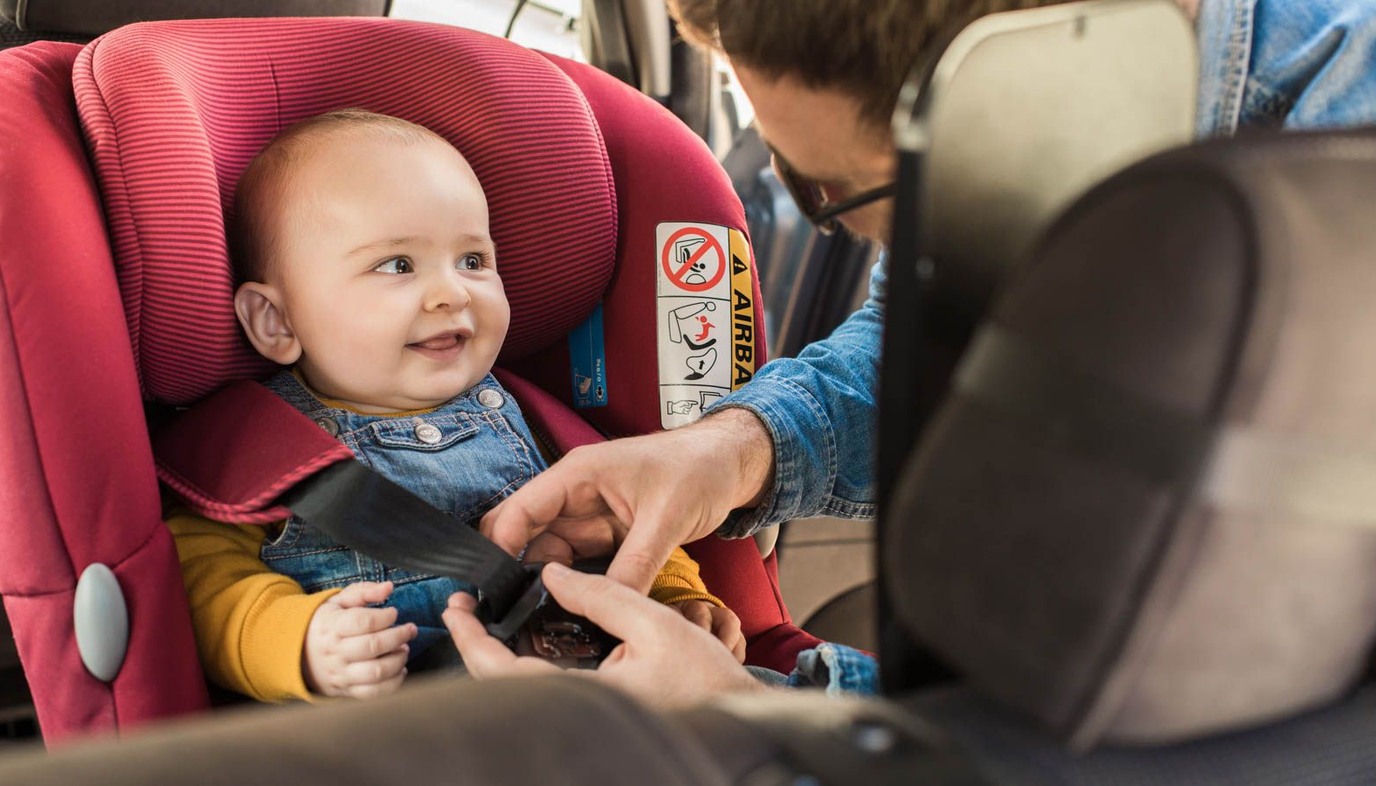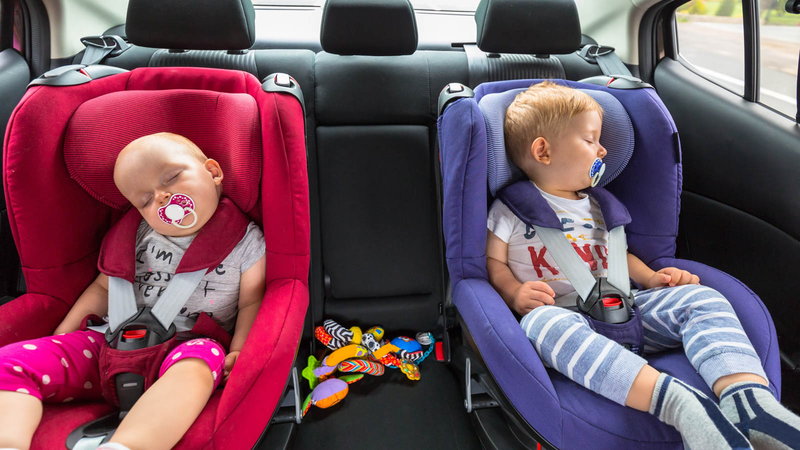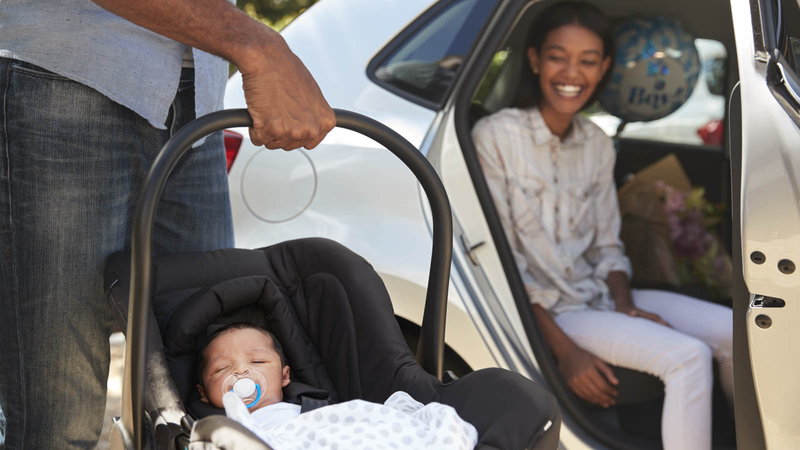
Travel safety is important, especially so when young ones are involved. Before you buckle your little one into a car seat, considering the following:
Car Seat Tip #1 – Size Matters
Size matters. Not all seats are designed for all children (or for all vehicles, for that matter). Make sure that you’re using the right seat for your child’s height, age, and development. Infants should ride in rear-facing seats until they are one year of age and weigh over 20 pounds. Both criteria should be met before moving your infant to a forward-facing seat. From there, the little tyke can ride in a forward-facing seat until he/she outgrows it. However, there is no reason why you have to move your child to a forward-facing seat just because he has hit the one year and 20 lb milestone. A rear-facing seat that accommodates your child’s weight may be safest for children under four years of age, according to some experts.
Premature babies may not be able to sit in a reclined position at first. If this is the case for your child, invest in a crash-tested car bed. Small babies are usually better off in seats without tray-shield harnesses; if the harness sits too far from the tiny body, the child’s face could hit it in a collision.
Car Seat Tip #2 – New is Often Better
Car seats can be expensive. While the most costly price tag doesn’t guarantee that it’s the safest, opting to purchase a used seat to save cash can be risky. Make sure that the seat you’re harnessing your child into meets all current Federal-mandated requirements. You should not use a car seat that is over six years old, has visible cracks, doesn’t have a model number and date of manufacture label with it, comes without instructions, appears to have missing pieces, or has been in an accident. Purchasing a seat that is used from a garage sale, Craigslist, or anyone other than a trusted friend or family member may be unwise simply because there is no way to verify if the car seat has been involved in an accident.

Car Seat Tip #3 – Convertibles Can Save You Cash
Instead of purchasing used (see Tip #2), consider investing in a convertible seat. These seats allow you to switch their positioning from rear-facing to forward-facing and accommodate your growing offspring. Note that these seats are bulkier than strictly infant seats and don’t have carrying handles; because they have higher height and weight limits, convertible car seats are ideal for larger babies.
Car Seat Tip #4 – Stay Back
Positioning is crucial. An infant needs to face the rear, secured in the center of the rear seat of your vehicle. Essentially, you’re protecting your child from intruding objects or vehicles in the case of an accident. You’re also avoiding air-bag-instigated injury; all children up to the age of 13 should sit in the back seat.
Car Seat Tip #5 - Read the Instructions
Safety should not be trial-and-error. Each seat will have a unique set of installation and safety instructions. If you’re assembling the seat, make sure that each part is used; extra pieces lying around or homemade parts made of bungee cords are disasters waiting to happen. The manufacturer’s instructions will dictate the angle of the seat, the weight the seat can handle, and the best ways to harness your child into the seat. Put your body weight into the installation, kneeling in the car seat to ensure it’s not too loose. Never use seatbelt extenders with a car seat. If you’re ever in doubt, or just want to make sure you’ve optimized the seat’s safety, check out a local car-seat clinic. Visit SeatCheck.org to find a certified inspection location.
Car Seat Tip #6 – Bundle After Harnessing
Yes, blankets can be dangerous. Instead of bundling your child with blankets or padding him from behind before securing him into his seat, add blankets after the harness is firmly in place. Too much bulk can prevent you from tightening the straps enough. If your infant slouches in his seat, add blanket rolls to each side of the child and between his body and the crotch strap. As clothing thickness is never consistent, always readjust the straps when buckling him in.
Car Seat Tip #7 – LATCH On
Most cars built after 2002 come with the attachment system LATCH: Lower Anchors and Tethers for Children. Both the car and the safety seat need to be LATCH-compliant in order to securely attach the car seat. LATCH anchors the car seat to the back seat of the vehicle without the use of a seatbelt, often making the installation process easier and, subsequently, safer.

Car Seat Tip #8 – Clean Up Carefully
Before cleaning up a car seat mess, refer to the manufacturer’s instructions. You don’t want to compromise the integrity of the straps, fabrics or mechanical parts by using harmful cleaning agents in an effort to clean up a snack that has gone rogue.
Car Seat Tip #9 – Use It All the Time
There’s no trip too short for a car seat. Sure, it may add a minute or two to a jaunt down the street, but neglecting to properly secure an infant in a safety seat isn’t worth the risk. Make safety a habit and buckle up yourself as well. Not only are you setting an example to your children, you’re also protecting yourself from harm. Your safety is important, too, if you want to be around long enough to raise your babies.
Car Seat Tip #10 – Moving On Up
Your child has outgrown the infant rear-facing seat and the front-facing toddler one. Now what? It’s time for the booster seat, which helps correct the fit of shoulder and lap seatbelts designed for taller bodies. If your child can’t sit with her back against the back of the seat and her knees bent over its edge, or the seatbelt is hitting her face or neck, she needs a booster seat. Take advantage of this stage to teach the habit of seatbelt-wearing.
